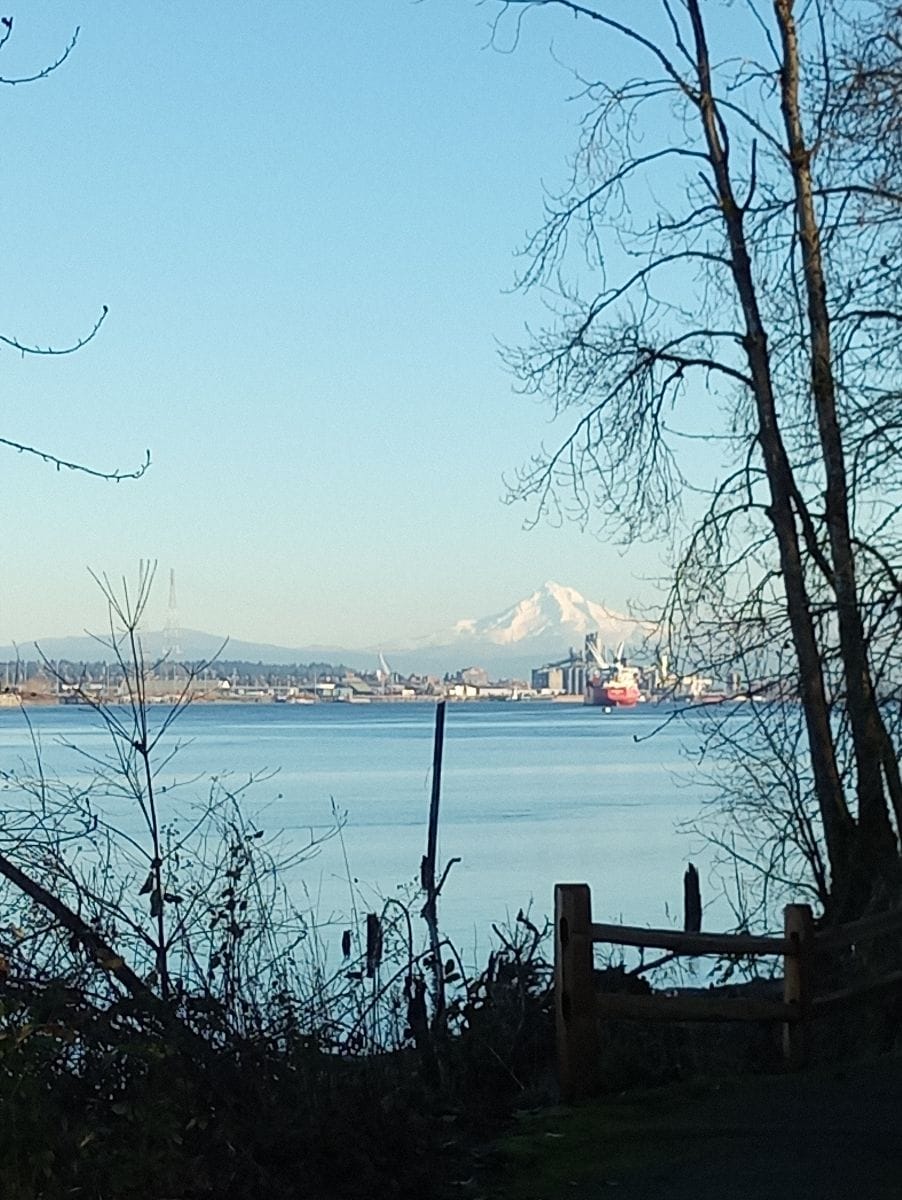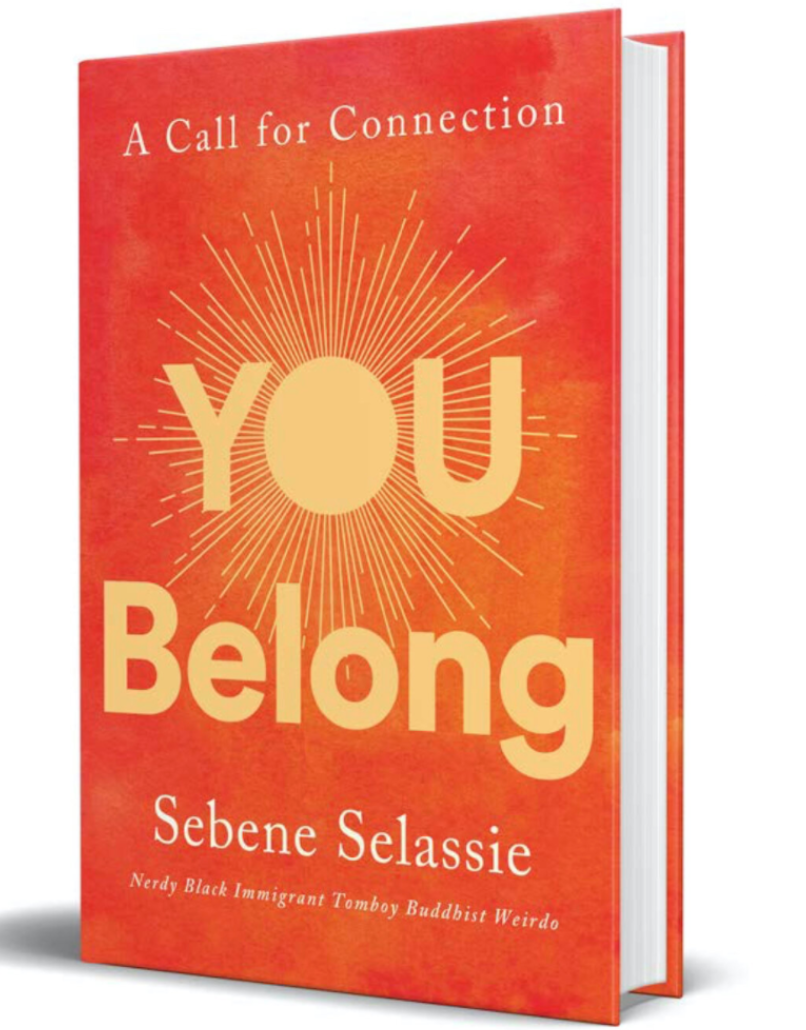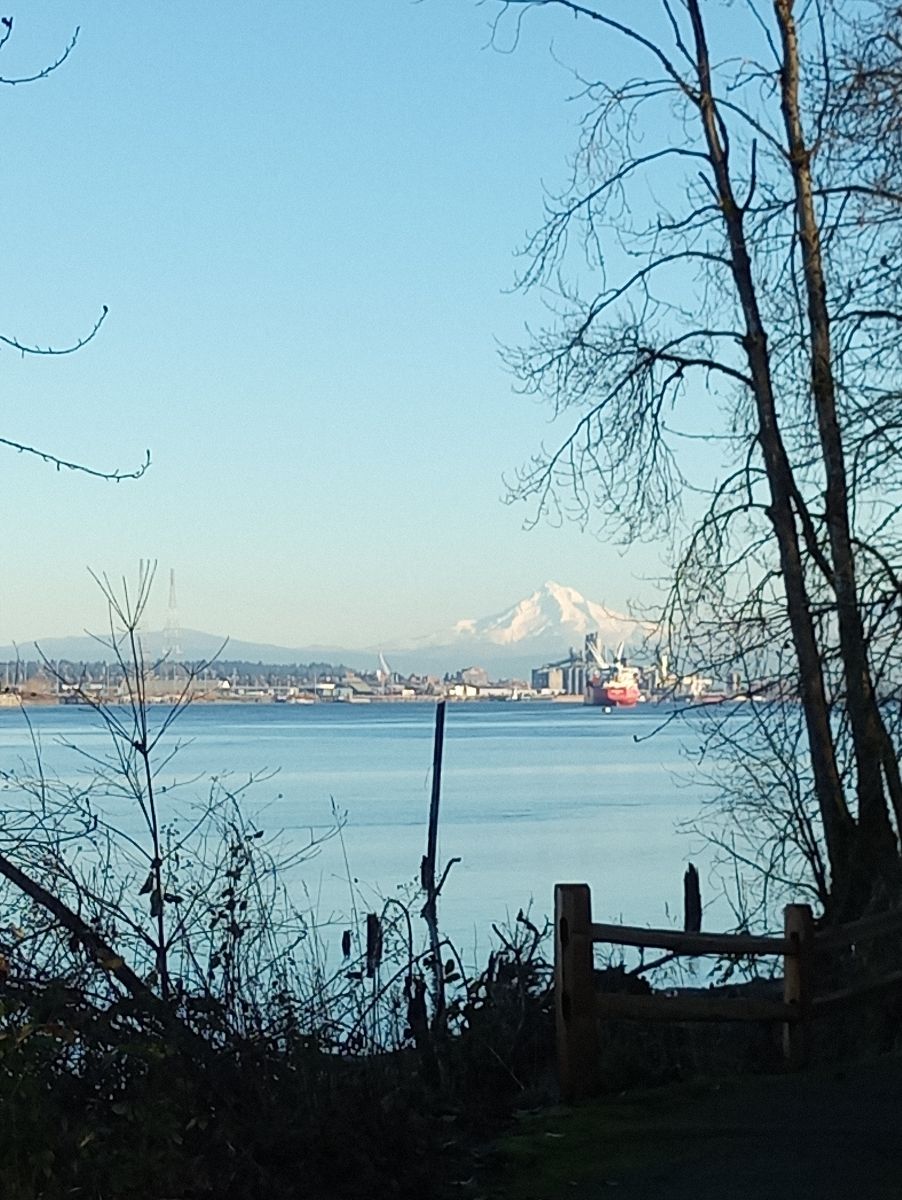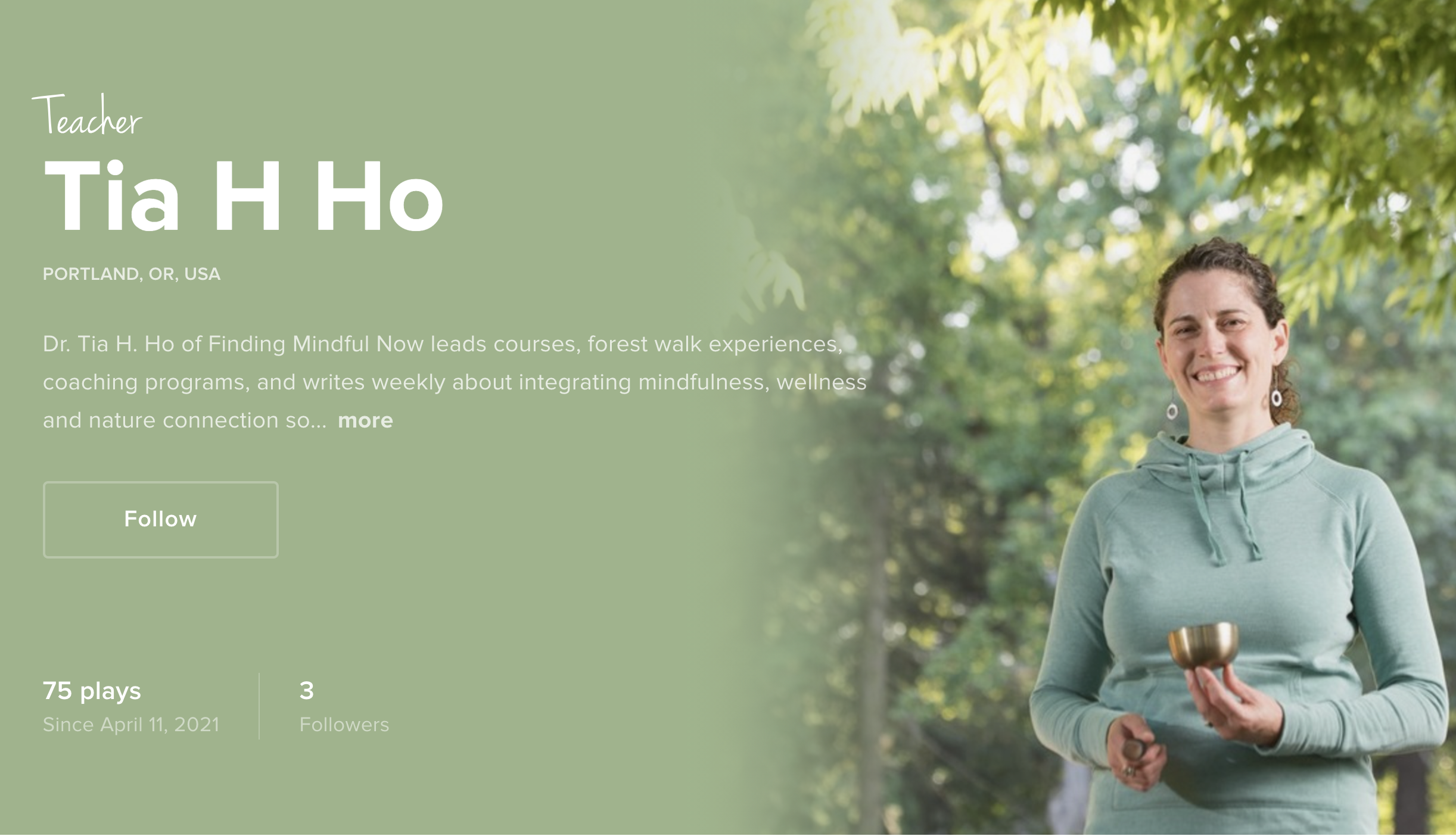Moment of Mind April 2021


Moment of Mind
In mindfulness we’re practicing tuning into our moment to moment lived experience through attention. In this month's weekly newsletters we've been talking about structure as a support for action taking, emotional expression, and ultimately... change. Today I want to consider what structure isn't.
To review, structure can be supportive for creating a sense of safety for emotional expression, as I spoke about in week 2. For example when there’s a long history of trust in a friendship and there’s a moment of shared vulnerability and closeness, this container of emotional support can seem like it’s the cause of release. The container of the friendship is like a gentle nudge...the expression coming through is you.
Structure can also be supportive in action taking, as I shared last week. For example an accountability tracking system like a running app or a habit tracking sheet toward a wellness goal can seem like it’s the goal setting and the small hits of dopamine as reward (that's a neurotransmitter that contributes to seeking pleasure or initiating a stress response during perceived risk) from completed tasks that are making the momentum happen. Those are like little pats on the back. The action though is still coming through you.
Structure alone does not solve anything. Planning and tracking systems don't create momentum, action does. Hugs, therapy, and mindfulness don't force the nervous system to settle - it does that on its own, they are supports when that process is happening. Structure supporting change isn't the whole story.
If you’ve had a habit tracking system in place and then somehow stopped doing it (even after repeated action every day for 66 days based on this study from 2012), then you know that the little boost of dopamine hits, the information about patterns, and the incentive of seeing one task after another isn’t always enough to keep a habit going. Similarly, if you've
experienced what it's like to go from feeling like you had room to express in a friendship, and then suddenly you felt like you didn't....you know that these social structures are as solid as the meaning our mind gives them. It’s never solely the structure that is the reason we take action or release emotions. Supports are a wonderful foundation...and there's something else at play that can't be described easily.
In my experience change always comes from a shift in understanding.
When something new is understood, then the underlying beliefs connected to that understanding, and then all the actions that come from it, shift. This is partly based on how our brain-body systems function. The brain is an association making system. It uses prior experiences (stored as conceptual memories) with current internal and external sensory inputs, and where attention is resting, to create thoughts and emotions. Beliefs are just thoughts built unconsciously over time. Your self identity is a belief, built from all the social interactions the brain has stored over time, continually under revision.
Despite my loving to write this newsletter and having the regular structure to support getting the words on the page, the mind will bring up limited thinking ("I don't know what to say" or "no one will like reading this") that interrupts this action. Listening to fear is an incredible action stopper.
All behavior comes from a combination of life energy that you are and conditioning of this brain-body system.
Despite my recommending structural supports and utilizing an ensemble of them, it becomes more clear to me daily that the structures themselves aren’t the “fix” people are seeking. Our brains like the "3 tips to less stress" because it sounds easy, it sounds like there's a problem, and that we have control to fix it which is satisfying (like those dopamine hits) in the short term. And the "3 tips" definitely can help with conditioning the system to have more options for behavior. If you don't know what a boundary is and how to set one for example, then for sure it's useful to learn those skills. I still remember the light bulb feeling of the insight that saying "no" was even a possibility - talk about a shift in understanding!
And after lots of skill building...when you've done all the things, read and tried all the tips, then you know there's something else going on. It's not your fault if you don't get the outcomes promised by the accountability tracking system. If you drop the habit tracking system it doesn't mean that you're flawed. If the "3 tips" don't seem to lead you to the outcomes you want, it doesn't mean you're doing something wrong. The reason I think some people avoid structural supports is that the mind will use them as evidence, or a prop, to reinforce a negative belief about the self concept.
That's a dead end for change.
The ease and flow we are seeking is underneath the activity of the mind. It's why finding things that are engaging feel so good - the mind's nattering stops on its own. It's not the activity that's doing it, it's the mind turning self reference down while the activity is happening. And we all know that once an activity becomes second nature that mind chatter comes blooming on back.
Structural supports can sometimes help reveal the core awareness that we are. Both for when nothing changes no matter what support is in place, and to see what it's like when presence emerges. Mindfulness practices have been a structured support for me that have helped reveal the unruliness of the mind that isn't personal and the way the curtain of the mind parts and awareness can flow through. For this week I invite you to choose one of the support structures you are already using and notice what the mind does before, during, and after whatever action happens. See if you can notice a point where the mind stops talking about itself. Another way to say this is a core mindfulness practice Light Watkins reminded me of in one of his newsletters recently - when you wash dishes, afterwards what do remember about the dish washing? It's an invitation to dive deeper into this moment - even if that moment is spent filling out a habit tracking sheet.
Inquiry is a structured support for change.
I'd love to hear what you notice <3
Tia
Love for Your Inner Science Activist Nerd

This month I recommend reading the book You Belong: A Call for Connection by Sebene Selassie (who calls herself a Nerdy Black Immigrant Tomboy Buddhist Weirdo - what's not to love there?). As someone who continues to explore how to integrate mystical pursuits with practical ones, I appreciate the grace and love poured into this book about how at our core we all belong. We are born belonging, and despite all the attempts of people ensnared in fear to marginalize, that fact of belonging does not fade. Published in 2020 it's also timely. Ms. Selassie visits topics like the pandemic, systemic racism, disconnection, domination and compassion and brings us back to the core truth over and over. Her description of how she was able to find a way through doing metta (also called loving kindness) meditation in relation to George W. Bush - basically sending someone she really thought she disliked love and compassion - was helpful, I understood metta in a new way.
Her metaphor for the book is that it's like a map key - the small little box of symbols that tell you how to interpret the map. We each make our own map, and this is just one of the keys to help guide us on our journey.
I love everything about this book so far.
Give me another week before you request it from the Multnomah County library though because I'm not done reading it yet. If you click on the book image it will take you to her website.
Get Your Park Groove On

Image of Mt. Hood in the distance from Kelley Point Park, large shipping vessel on the river, winter trees in the foreground.
If you haven't yet visited Kelley Point Park at the tip of Chinook land, where what we now call Portland juts out into the confluence of the Willamette and Columbia Rivers, let yourself visit. It has paved and unpaved trails, a grove of cottonwood trees, ample sandy beaches for discovering bird and animal tracks in the sand (best in the mornings), parking, picnic tables, and a view of the two rivers.
The caveats are proximity to industry and accessibility limitations on the beach. While looking at huge ships is cool, it's also a very clear reminder that you are right next to the Port of Portland who used to own this land. I have led mindfulness walks there (one loop tucked at the end is great for this) and it's a little too compact and population for forest bathing.

Thank you to the readers who have asked me to record these newsletters. I have started recording versions of the applied mindfulness invitations in the weekly and monthly newsletters on Insight Timer. I wasn't feeling these had enough content for a podcast, so the 5-15 minute recordings are a great fit. If you have wanted to donate based on appreciating the newsletters and aren't on Patreon, you can do that through Insight Timer (I receive roughly 1/2 of whatever is donated). I am adding a sensory based invitation at the beginning (what I call arrival practices which will be familiar to those of you who do coaching calls with me) and I sometimes add a bit of content. You can click here to listen (I think you may have to become a member of the app first). I am thinking of doing an outdoor series so folks can go for a walk on a lunch break and do abbreviated forest bathing sensory practices.
| Copyright © 2019-2021, Finding Mindful Now LLC, All rights reserved. www.findingmindfunow.com, originally published on MailChimp with information on current offerings. Some images or content lightly revised since initial publishing. |
